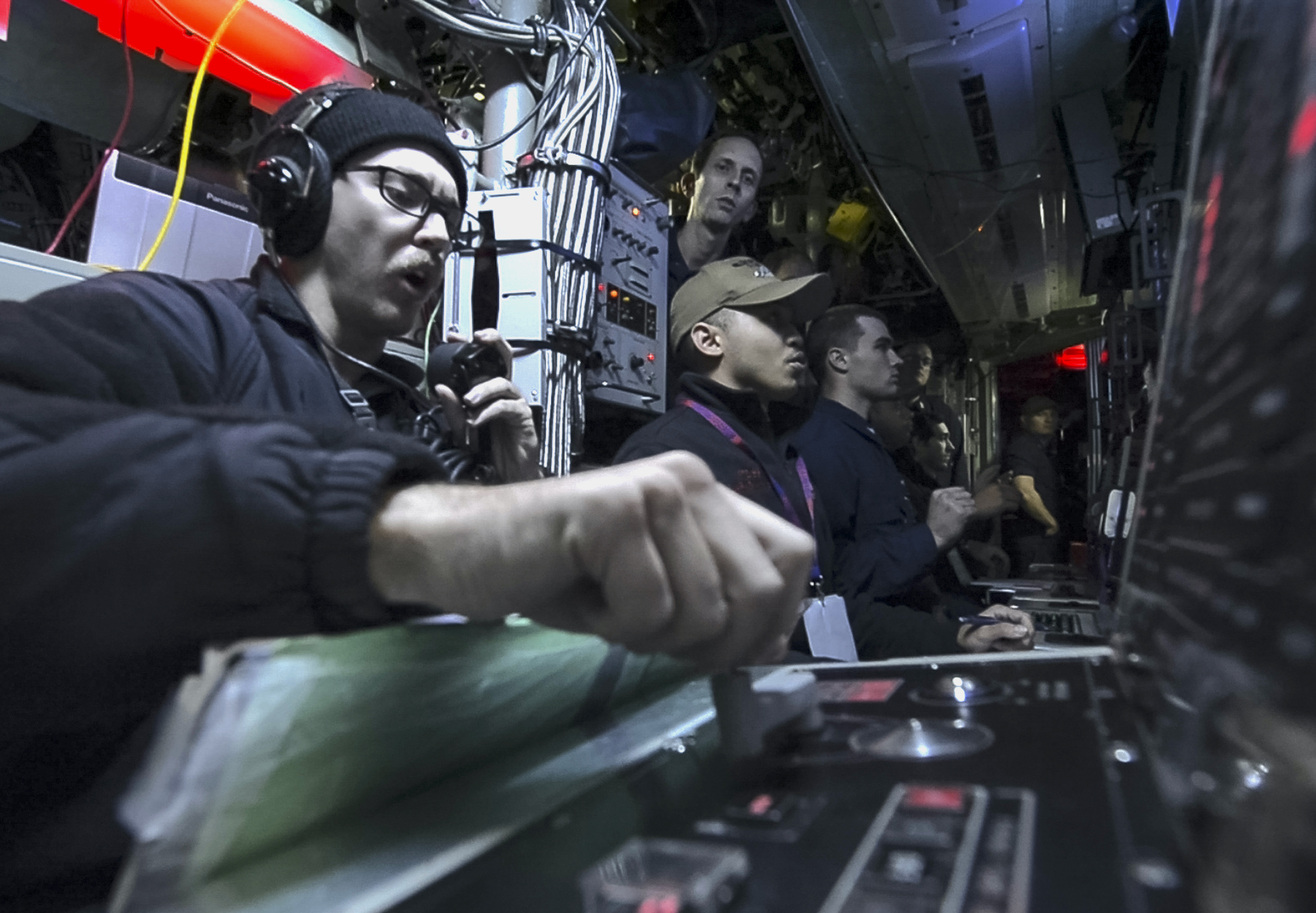
Fire Control Technician 3rd Class Jacob Thompson, from Cleburne, Texas, initiates a Mark 48 advanced-capability torpedo launch aboard the Los Angeles-class fast-attack submarine USS Chicago (SSN-721) in support of Valiant Shield 2020. US Navy Photo
The submarine fleet has shifted its focus from operational readiness to warfighting readiness, and with that new mindset has come changes in how the fleet conducts training, acquisition and maintenance, several officials said last week.
After a post-Cold War focus on intelligence missions, “I think we had slipped a little bit on just having the knife-in-the-teeth ability to think about warfighting and making sure we were ready to deliver lethal effects to adversaries when called upon. So that’s been a cultural shift we’ve been working on this past year,” Vice Adm. Daryl Caudle, the commander of Naval Submarine Forces and Naval Submarine Force Atlantic, said last week at the Naval Submarine League annual symposium.
“We’ve tweaked our fleet readiness training period and pre-deployment training to focus on high-end warfighting. We’re trying to balance that with a peacetime mission set to make sure that, sure, we can still go into shallow water, high-contact density, do those collects that we’re known for – but we’re really focusing now on delivering lethal effects,” he said.
Caudle noted several ongoing initiatives to help with this shift in focus: shoring up the fleet’s inventory of advanced capability (ADCAP) torpedoes, as well as growing the inventory of other new tools like unmanned vehicles; establishing a submarine aggressor squadron to ensure the force is training for the right kind of peer adversary capability; and bolstering maintenance capabilities at home and in expeditionary locations to ensure the subs are in fighting shape.
On the issue of maintenance and material readiness, Caudle said the force was testing “expeditionary weapons-loading and resupply forward. We’re doing that through all sorts of different methods using unique ports, flyaway teams to bring the kit, and actually loading Mk 48 ADCAPS and doing resupply in various innovative ways.”
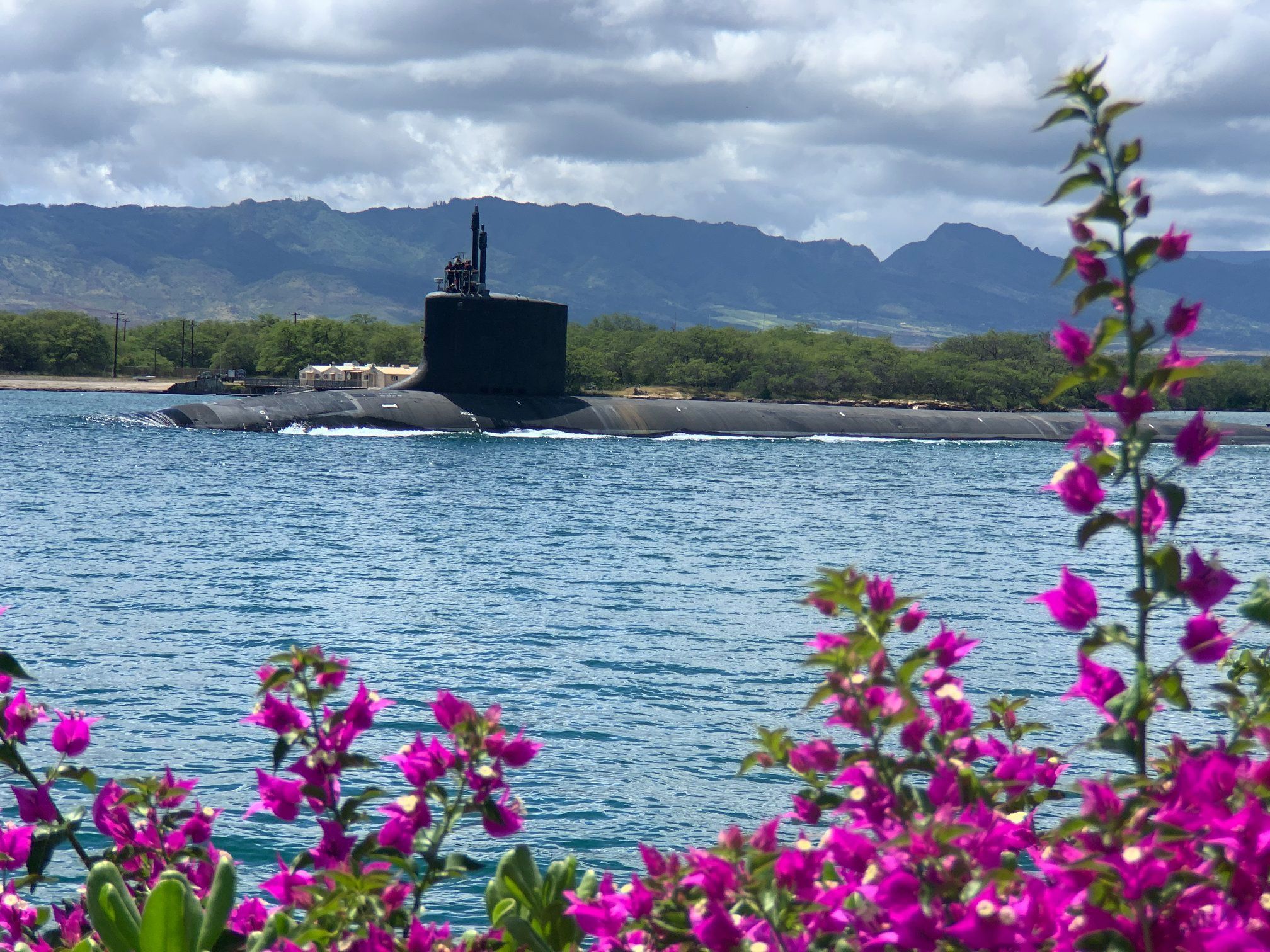
The Virginia-class fast-attack submarine USS Missouri (SSN 780) departs Pearl Harbor on May 10, 2020, after completing a scheduled extended dry-docking selected restricted availability (EDSRA). Missouri’s routine maintenance and modernization work was completed five days ahead of schedule after successful sea trials and certification. US Navy photo
“We’re working on maintenance as well to be able to do this more robustly throughout the globe. We’re calling it ‘Shop in a Box’ concept, where we can basically build out maintenance capabilities and kit in Conex boxes and conduct repairs and maintenance in theater. Faslane, U.K., and Rota, Spain, are a couple places we’re testing this out: our partners love it because we come in with our submarines, and our flyaway teams come in, and all the kit’s ready to go, and we can do much more sophisticated repairs,” he continued.
“But we do want to rely less and less on flyaway teams; this is a Navy-wide cultural shift. We want our ships to be kept repaired at sea, and so we want to limit the number of [casualty reports] that are being [sent], we want the number of technical assist requirements of having to send flyaway teams to be reduced, and we want to enter these shipyard availabilities … in better material condition. So this is part of this warfighting cultural shift to just have the captains keep their ships repaired at sea, and that’s an extremely important part of this initiative.”
Rear Adm. Blake Converse, the commander of Naval Submarine Force Pacific, said in his remarks during the virtual event that he worried about the fleet’s ability to do maintenance in the shipyards and in expeditionary locations, especially if the attack submarine fleet were to grow in the coming decades as Navy and Pentagon leadership have discussed.
Converse noted that the Navy has 50 attack submarines today, compared to about 100 at the end of the Cold War. Still, despite the SSN force shrinking to half its former size, the infrastructure to maintain and support it has shrunk even more: the Navy has just two submarine tenders today compared to 12, four public shipyards compared to 11, just two fixed undersea Sound Surveillance System (SOSUS) stations compared to 22, and many fewer maritime patrol aircraft and surveillance ships to help support SSN operations compared to the later years of the Cold War.
“This is concerning today, and as we increase our SSN force structure over the next two decades, it will become a crisis without dedicated action today,” Converse said specifically of the maintenance capacity, though he said he worried about boosting the other undersea warfare support systems too.
New Technologies
Converse spoke at length about the improvements he hoped to see in unmanned systems – both moving vehicles and fixed seabed sensors – that will help the attack submarine fleet do its job better.
On the mobile side, the fleet has unmanned underwater vehicles, remotely operated vehicles and unmanned aerial vehicles that can feed information to attack subs.
“These capabilities are pennies on the dollar compared to building more submarines or making substantial changes in sensor and weapons packages. They can’t replace an SSN, and we need more of those, but in the near term we also need these capabilities to expand our lethality as we seek to ramp up production of SSNs in the long term,” Converse said.
Rear Adm. David Goggins, the program executive officer for submarines, said in his own speech at the event that his team had had success with a sub-launched unmanned aerial system (SLUAS) that just reached initial operational capability in September.
SLUAS is a rapid acquisition program that, just eight months after having its capability production document approved, conducted its first at-sea demonstration with Los Angeles-class USS Annapolis (SSN-760). Goggins said Annapolis launched all 12 of its SLUAS vehicles from periscope depth, controlled them out to tactically relevant ranges well beyond its own line of sight, and used them to conduct a simulated torpedo attack on USS Charleston (LCS-18). The UAVs sent back precise targeting data after the submarine got its initial sonar hit on the surface ship, and the pairing allowed Annapolis to hit its target at near the maximum effective range of the torpedo.
Goggins said PEO Subs has fielded five ship sets so far and will continue delivering more quantity as well as pursuing capability evolutions for the UAVs.
Advanced Training
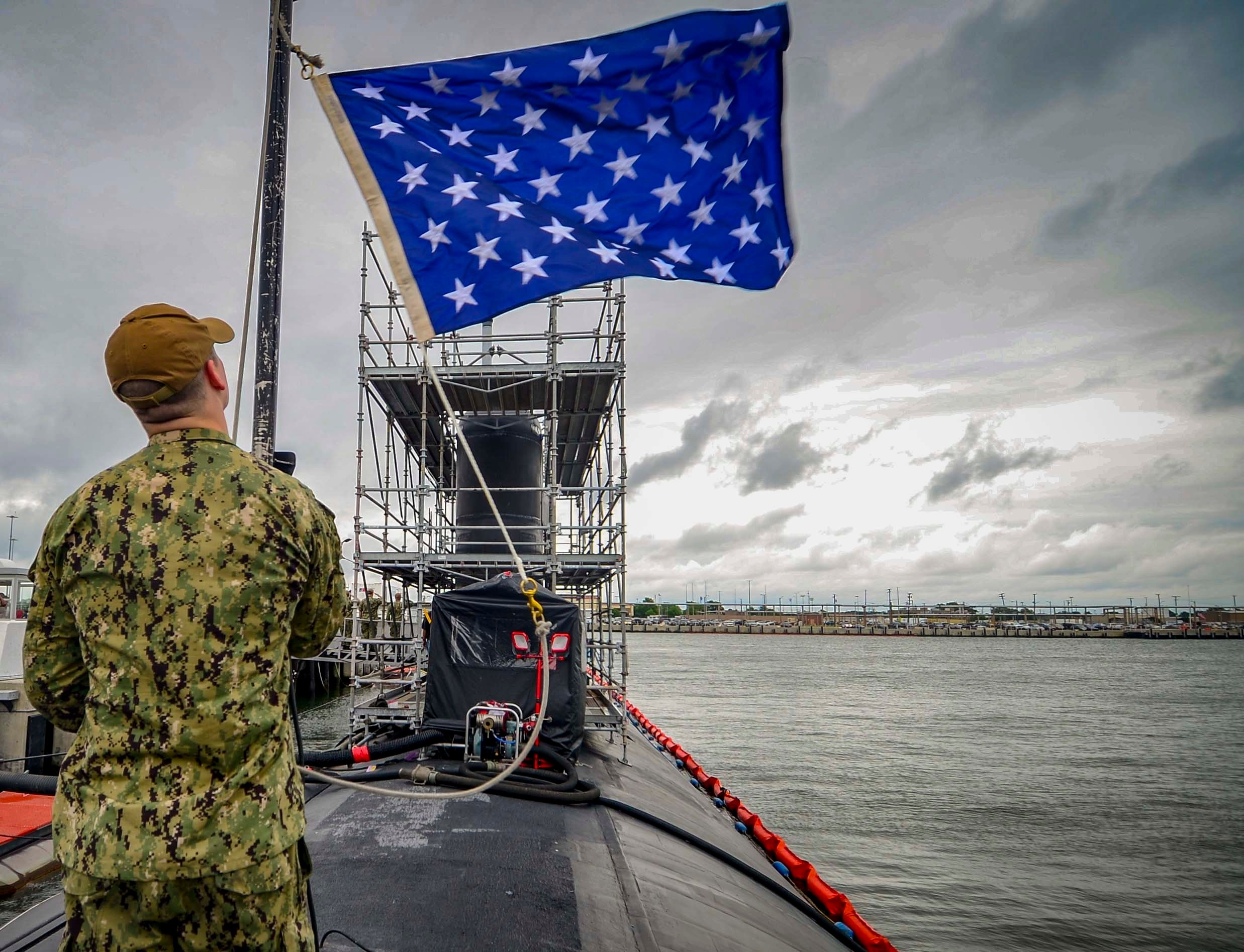
Electronics Technician (Nuclear) 1st Class Andrew Wagner hoists the union jack aboard the Los Angeles-class attack submarine USS Albany (SSN-753) June 11, 2019. US Navy Photo
The warfighting mentality in the submarine force can perhaps be most seen in how training and certifications are now conducted.
Capt. Kevin Mooney, the Naval Submarine Force Atlantic director of training and readiness, said during a panel discussion that a review showed the force was too focused on peacetime missions and needed to pivot to a more combat-focused curriculum.
In the old Tactical Readiness Evaluation, submarine crews were graded based on both missions like surface warfare and competencies such as navigation and contact identification. Mooney said both were weighted equally in the grading, and that within missions the TRE included about half peacetime missions and half wartime missions – meaning that the overall grade was only about 25-percent based on how well a submarine crew could actually succeed in a wartime mission in a combat environment against a peer adversary.
The new Combat Readiness Evaluation starts at the beginning of a combat operation scenario and asks the crew to work its way through a whole series of events based on combatant commander war plans. The crew can’t succeed in the evaluation without being good at navigation and target acquisition, but the grade itself is 100-percent based on how they perform in combat mission tasks such as land strikes, anti-submarine warfare and surface warfare.
Mooney said the shift to a CRE was a good start but that leadership wanted to see faster improvements, so they introduced an element of competition. At any time, an attack submarine crew could be called upon to go head-to-head against another SSN crew in a competition: the two crews would either act as adversary submarines working against each other or would be given the same mission against the same threat to see who could be more successful in reaching their objectives. Once a competition is called, the crew only has one week to prepare for it, Mooney said, so submarine commanders have to have the crew ready and well trained at all times, just in case. Mooney and Converse both said that submariners are competitive by nature and seem to be doing well with this training construct.
“When you put submarines head-on-head against other submarines, it introduces a level of uncertainty, and it also introduces the factor that it doesn’t matter if you follow the tactics precisely: if you get shot before you shoot the other guy, you lose. That’s how it works in war,” Converse said.
“Unfortunately, that’s not how it has always worked in our tactical inspections because we evaluate against the tactics. You have to understand the tactics, but you also have to recognize the values of dynamic maneuver, introducing uncertainty and all the other factors that go along with victory in those conflicts.”
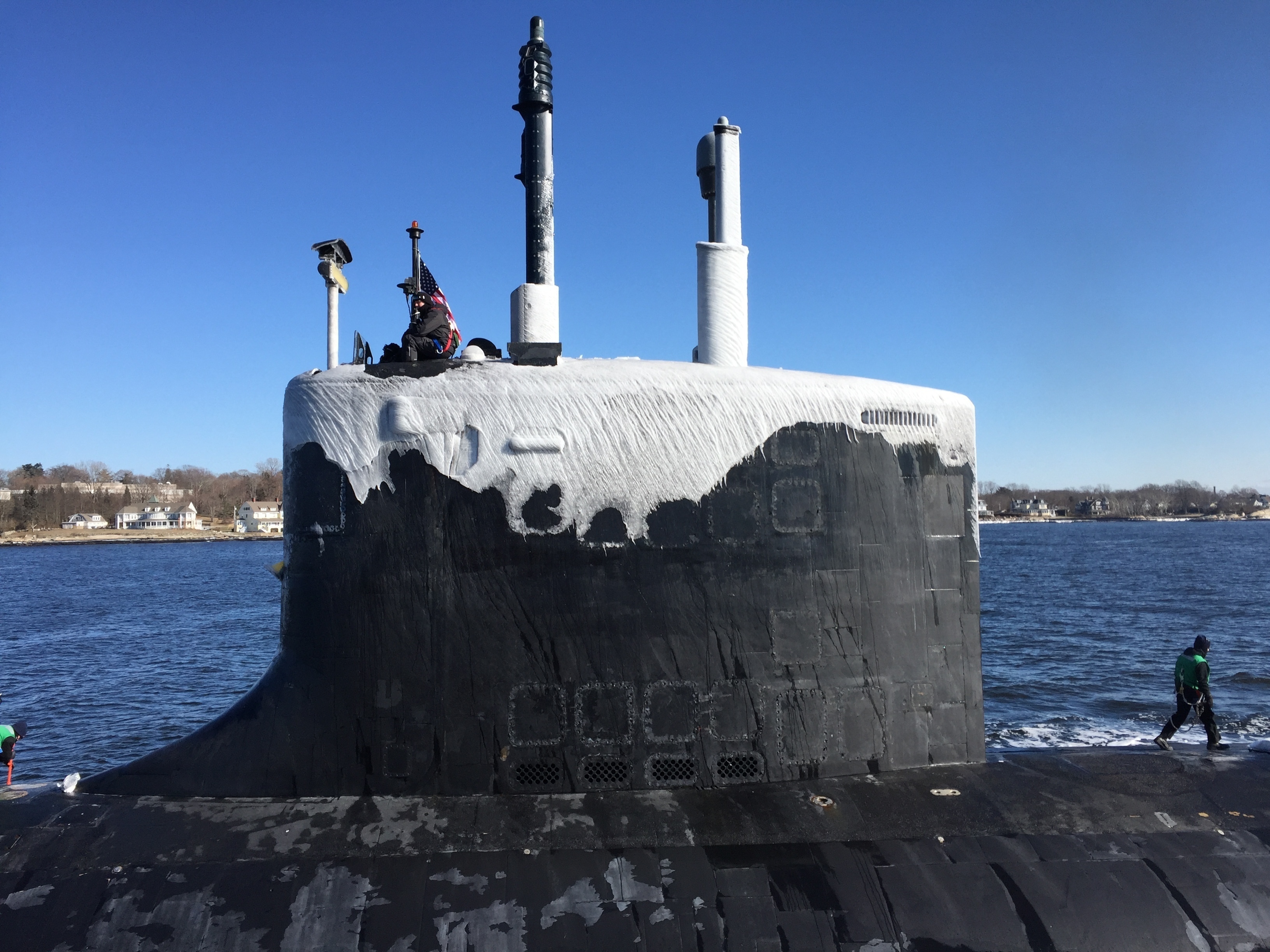
USS North Dakota (SSN-784), transit the Thames River as they pull into their homeport on Naval Submarine Base New London in Groton, Conn. US Navy Photo
To help inform these and other training events, one year ago the Navy stood up a submarine aggressor squadron under the Undersea Warfighting Development Center “who is focused on understanding our adversaries at a deep level” and using that understanding to inform simulator and live training events, Caudle said in his remarks. He said he was pleased to see this development, since serving as red forces for undersea warfare events involving other attack subs, destroyers or ASW aircraft was typically “a pickup game” by whatever SSNs were available and using whatever tactics they might employ as American sailors – versus using intelligence to inform how a Russian, Chinese or other attack sub might behave.
Capt. Eric Sager, the director of the aggressor squadron, said during his panel presentation that he works with the intelligence community, the type commanders and the director of undersea warfare on the chief of naval operations’ staff (OPNAV N97) to share an understanding of adversary submarine combat capabilities and ensure that simulators have the right functionality to behave like foreign submarines and that live subs can emulate them when serving as red forces.
Though there’s more demand for live submarines for training events than the SSN force can meet, Sager said the aggressor squadron has helped inform exercises so that, even without a live submarine present, the destroyers, helicopters, P-8A maritime patrol aircraft and more can get a good idea of how a certain kind of enemy submarine might behave.
“We are heavily involved in exercises in many cases that don’t involve submarines, and where we may model submarine behavior or model anti-submarine or anti-surface behavior from the adversary to help support their training objectives,” he said.
November 26, 2020 at 12:07AM
https://ift.tt/2KFVjMV
Submarine Force Changing Training, Acquisition to Focus on Warfare Against Sophisticated Adversary - USNI News
https://ift.tt/2WinW4G
Bagikan Berita Ini


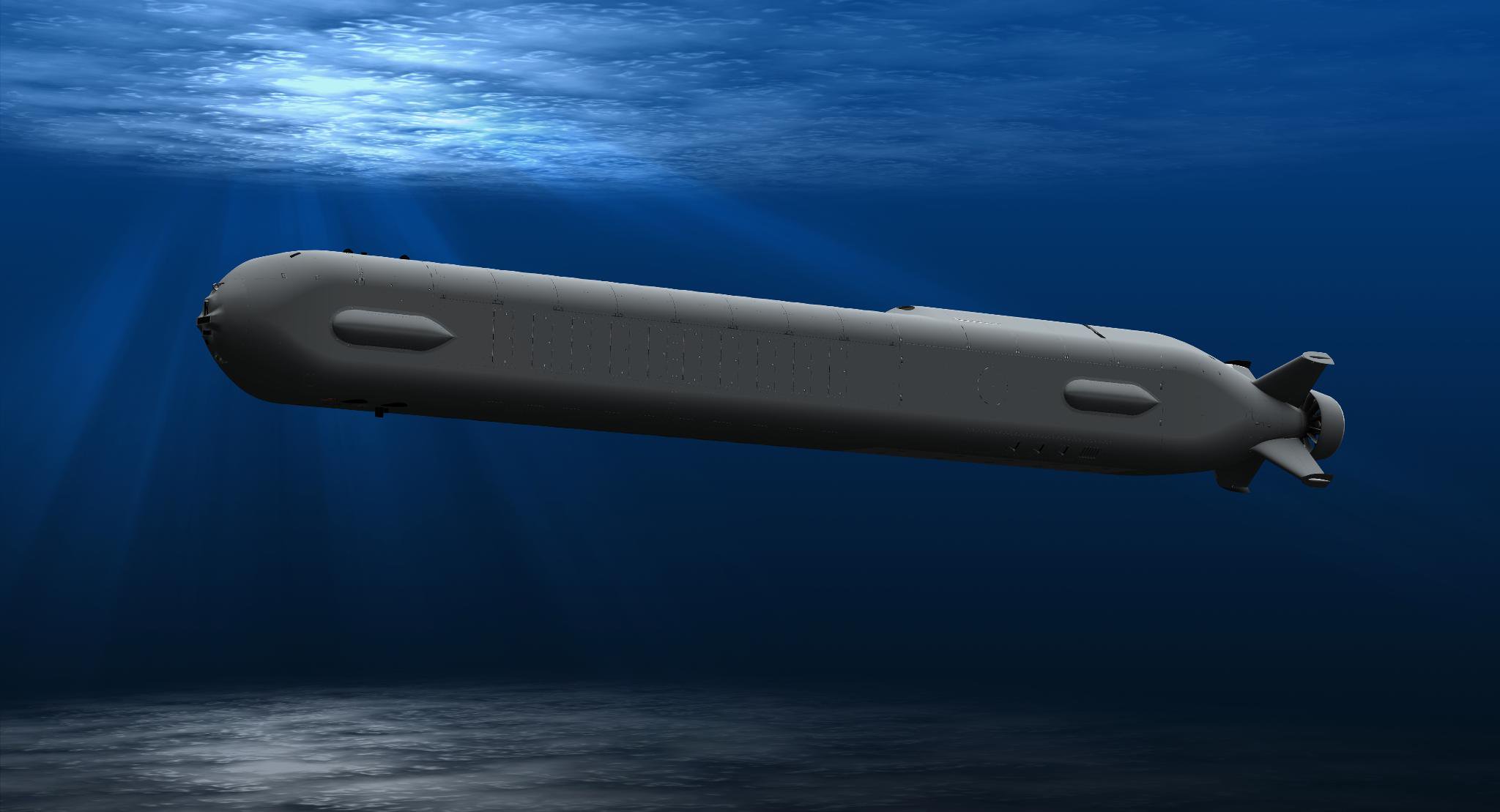















0 Response to "Submarine Force Changing Training, Acquisition to Focus on Warfare Against Sophisticated Adversary - USNI News"
Post a Comment